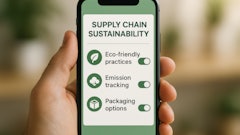
As they say, the best laid plans of mice and men often go awry. The supply chain system you have in place doesn’t exist in a vacuum — it will regularly face challenges, from minor errors and customer whims to unforeseen disasters. Whether it can withstand these tests will depend less on your ability to predict every eventuality and more on how flexible and adept you are at meeting and making the most of unfavorable or unique circumstances.
Granted, developing a sustainable supply chain is about more than handling threats — it requires recognizing and seizing the opportunity to improve your operational efficiency, build closer partnerships with the right third-parties and deliver a superior customer experience that fosters loyalty. Doing so begins with laying the groundwork for adaptability. Below are a few of the first steps you can take toward this endeavor.
1. Get a Bird’s-Eye View
Problems will inevitably arise. How prepared are you to effectively redirect flow, mitigate any losses, and meet your goals as efficiently as possible with minimal delay? To this end, it’s vital to implement a system that provides access to the full picture.
For instance, if an incident occurs in transit, are you easily able to determine the status of your product? Does your current system provide a clear overview of all available resources and third parties who offer viable alternatives?
At any given moment, you should be able to leverage these connections in real-time to achieve the best possible outcome. Much like air traffic controllers, the most effective strategy is one that allows you to navigate and coordinate all the moving parts of your system to ensure they flow smoothly and effectively.
2. Sweat the Small Stuff
Pennies add up to dollars. Many businesses are too willing to simply cut their losses or don’t realize the degree of revenue loss when they don’t mind the details. More than merely syncing operations to streamline them, ask yourself if your methods are as gainful and constructive as they can be.
In other words, think beyond inbound costs to how profitable the product and execution are. Are you needlessly wasting inventory? Are you matching accuracy against shared service agreements? Interrogate your system on a granular level to plug the numerous tiny gaps where substantial money leaks out.
3. If It Ain’t Broke… Fix It Anyway
Just because a process is “working” does not mean it’s working well or as effectively as it could. The market is competitive and consumers are ever eager to flock to greener pastures that offer quicker and cheaper alternatives. Always analyze and reassess your approach to stay competitive. Order fulfillment is inherently complex and a one-size-fits all model won’t cut it. You should always be working on ways to tailor your strategy around each customer to boost satisfaction. Moreover, to be able to adequately refine the details and customize flows, you’ll need the right tools to analyze everything from carrier performance to margins and revenues. Sustainable models do more than fix problems: They recognize that a less-than-ideal system is problematic in itself.
Creating a sustainable supply chain is challenging. A lasting model is one that recognizes and appreciates the complexity of order fulfillment and reverse logistics. You want an approach that is flexible enough to plan and execute operations both on a macro and micro level, as well as have the means to lend a critical eye to each facet of the process.
Fortunately, there is no shortage of tools and innovative software to help make this happen. Now that businesses can digitize their operations, they can approach network oversight with greater visibility, refined execution, and access to data that exposes pain points and indicates room for growth. The question going forward is: Are you really doing all you can to make your operation sustainable?


















